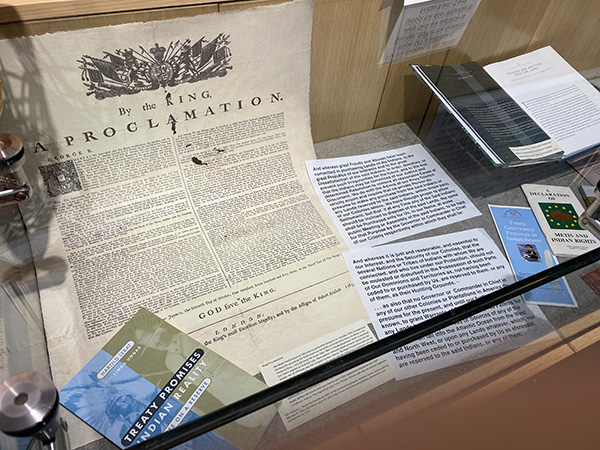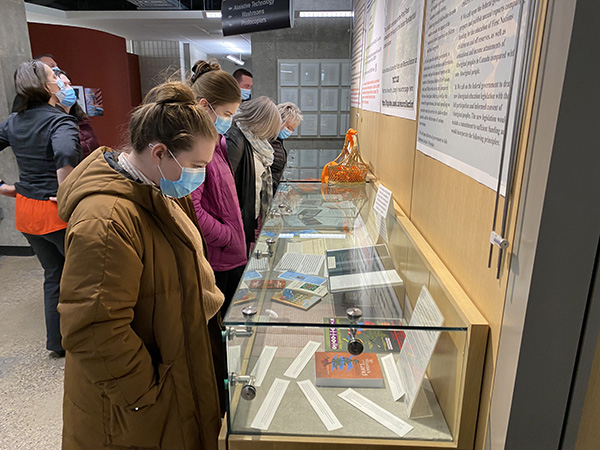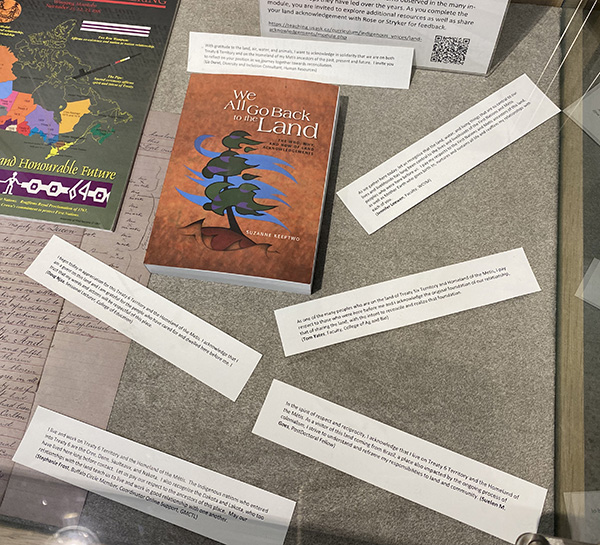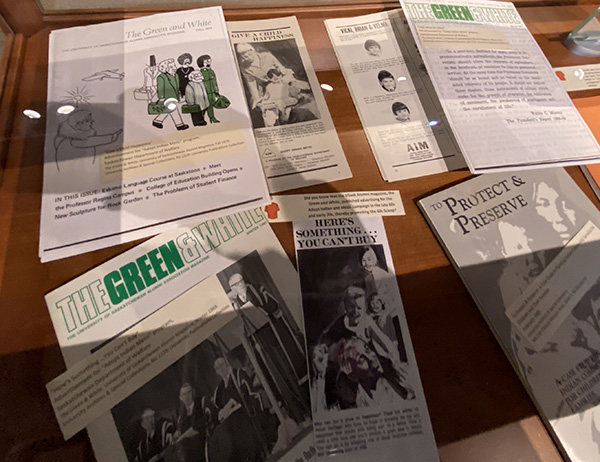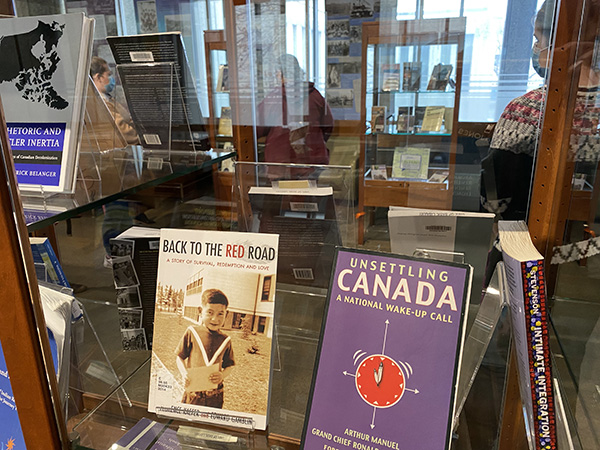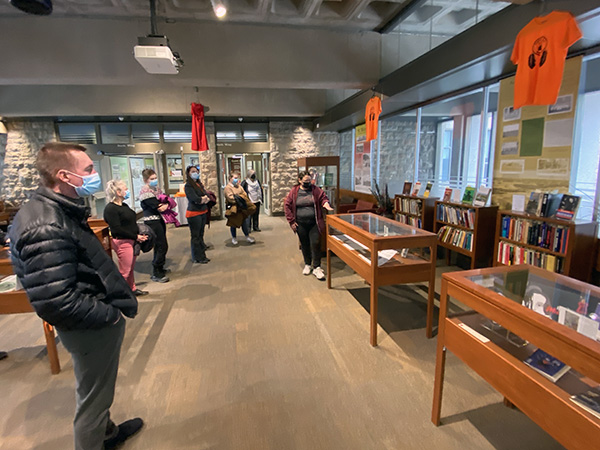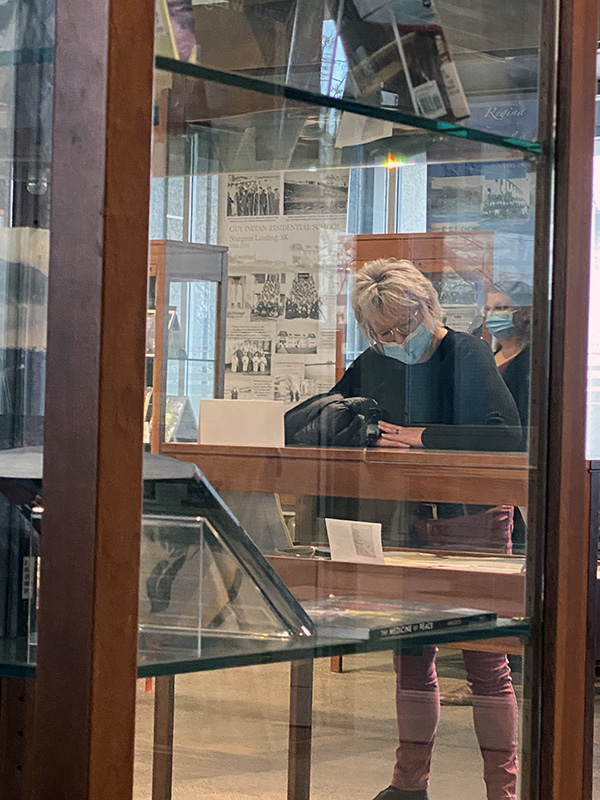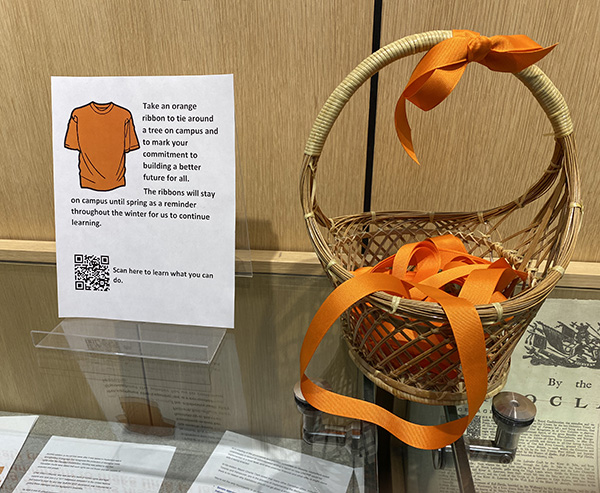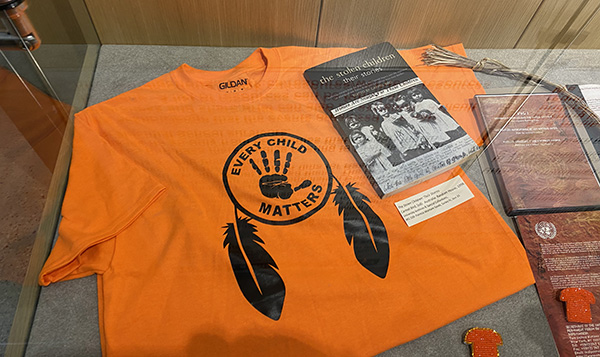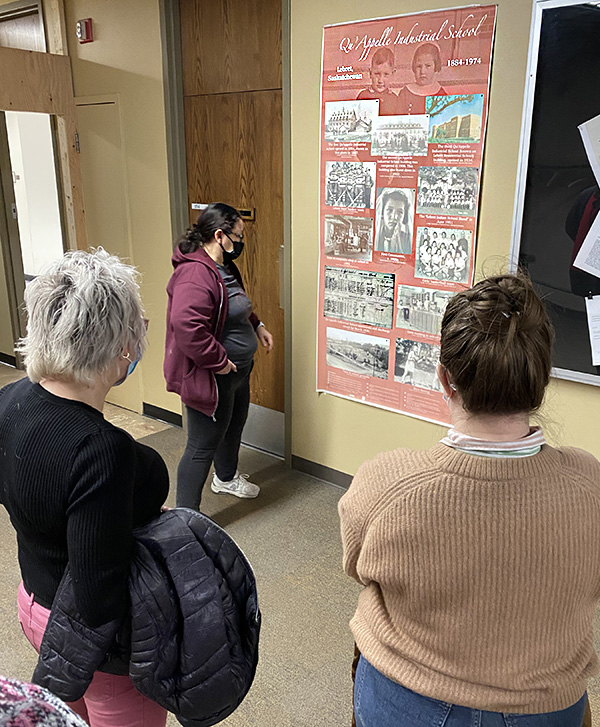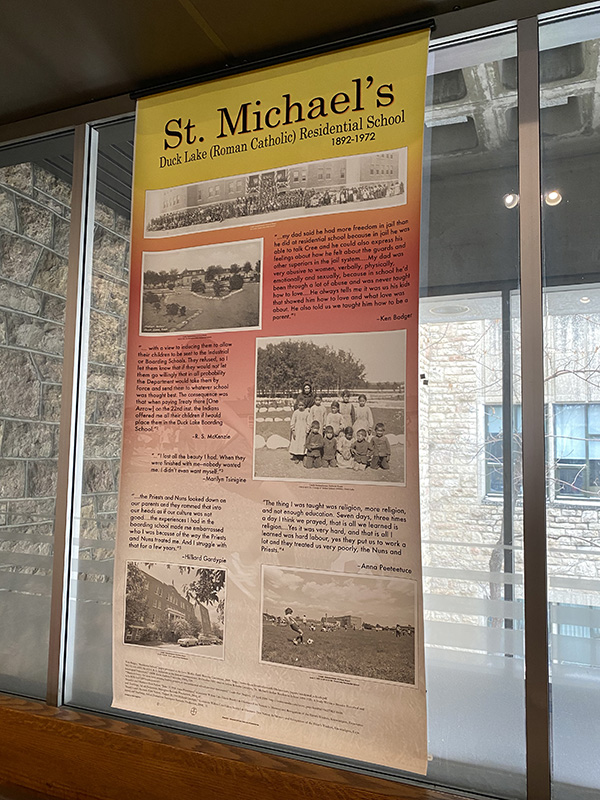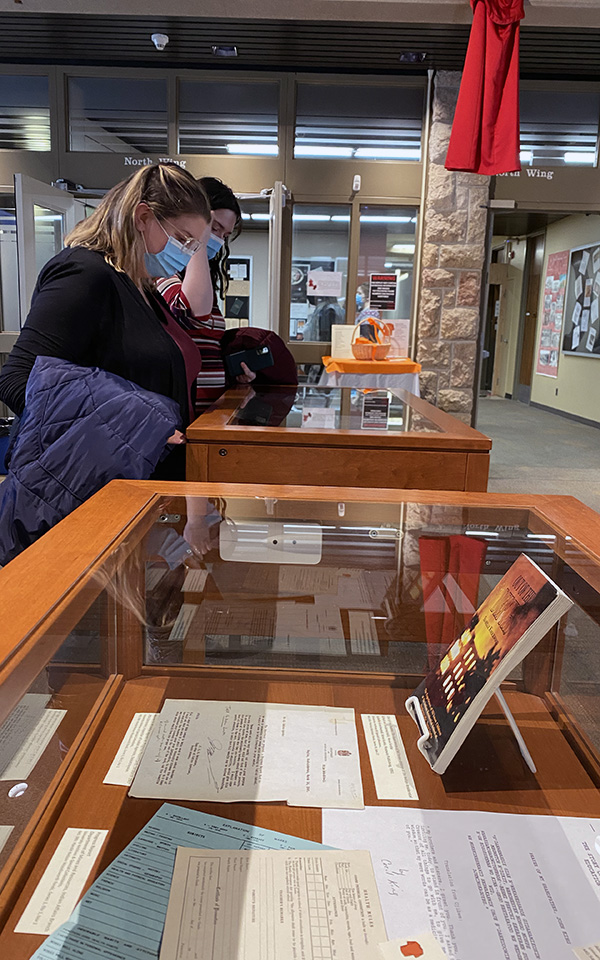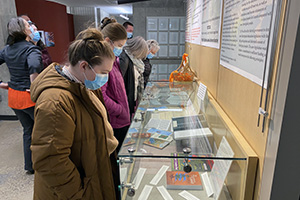
Not Just Another Day Off shines light on tragic reason for newest public holiday
STM staff members reflect on exhibit meant to spur difficult, necessary conversations
By Paul Sinkewicz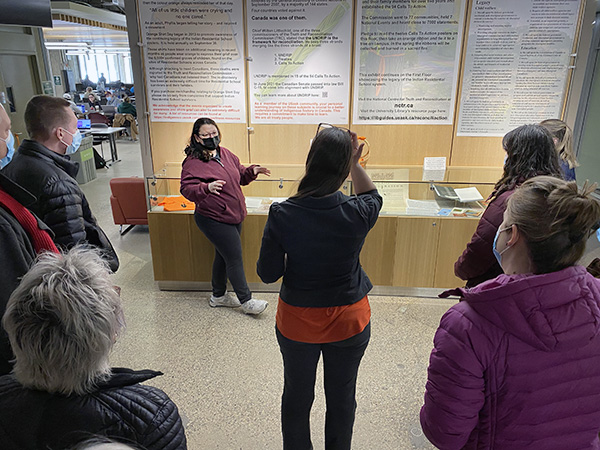
What are those orange ribbons all about?
And what is Orange Shirt Day? What do the red dresses mean?
For anyone who has asked themselves those questions, and is ready to learn and understand the history of Indigenous people in Canada, there is a wealth of knowledge available at the Murray Library at the University of Saskatchewan.
The library’s exhibit titled Not Just Another Day Off: Orange Shirt Day and the Legacy of Indian Residential Schools will be on display until June 27, 2022.
The exhibit is meant to educate the public about the reason behind Canada’s newest national holiday. Beginning in 2021, September 30 has been designated to mark the National Day for Truth and Reconciliation. The day honours the lost children and Survivors of residential schools, their families and communities. Public commemoration of the tragic and painful history and ongoing impacts of residential schools is a vital component of the reconciliation process.
The educational display has been open since September of last year, and runs until the end of June, which is National Indigenous History Month. June 21 is also designated as National Indigenous Peoples Day in Canada.
STM staff were offered the chance to tour the exhibit led by Donna van de Velde, Program Assistant and co-curator of the display with Librarian Deborah Lee.
The exhibit includes explanations behind the orange ribbons that adorned the doors, trees and lamp posts around campus, to remind the USask community about the ongoing responsibility of working on reconciliation. It also includes information about the orange shirts used to remind people of the many thousands of victims of residential schools and the red dresses that signify the missing and murdered Indigenous women in Canada.
Van de Velde, herself an Indigenous woman, warns the subject matter of the exhibit is very sad, and very heavy, especially for those directly involved in the tragedies visited upon Canada’s Indigenous communities. But she said these incredibly sad stories are part of reconciliation and must be faced before we can move on together.
Many of the books used in the exhibit have duplicates available to read. And she encourages people to read and share the information in them. They include the history of Canada’s treaties with First Nations, individual accounts of loss, and the legacy of residential schools.
Large posters feature each of the residential schools in Saskatchewan, including the Qu’Appelle Industrial School, where van de Velde’s grandmother was sent to work.
One of the displays that hit van de Velde hardest includes Green and White USask alumni magazines from the 1960s and 1970s that feature advertisements for the Adopt Indian and Metis program. It was the sales and marketing side of the ‘Sixties Scoop,’ and a reminder of the paternalistic bureaucracy that tore apart Indigenous families in Canada in so many ways.
“Some people have shared that they didn’t even know their own name, because they were referred to as a number.” She said. “And many didn’t even know when their birthdays were, because they were taken so young.”
But as tragic as the subject matter is, the exhibit is geared toward healing, and that is the attitude van de Velde likes to promote – active reconciliation.
One display offers examples of different land acknowledgement statements and encourages people to individualize their own statement.
Visitors are also invited to take advantage of a temporary smudging room. It is available to students, staff and visitors Monday to Friday from 9 am to 5 pm.
The impact of the Not Just Another Day Off exhibit is best summed up by the participants of the STM College tour themselves:
“I would encourage everyone to go view this thoughtfully put together exhibit. It is layered with hard truths, calls to action, and hope and resiliency. The U of S library and archives staff have done wonderful work finding items within our own history that really hit close to home, as well as contemporary books and articles for further reading and research. The first step in reconciliation is educating yourself and an exhibit like this provides a great foundation.This exhibit being so prominent in the library is a good start and, I hope, a message to our Indigenous community members. We want to say that we see you, we hear you, and we walk with you.”
Amanda Gieni
“I was deeply moved by the exhibit, both the depth of pain and the power of resilience demonstrated in the stories it depicted.”
Gertrude Rompré, Director of Mission and Ministry at STM College
“This is what I am learning about TRC. It is so much more than a report of 94 Calls to Action. Part of our Canadian history is that there were horrible and inhuman acts imposed upon the First People of our country. This was dark and shameful. But now as Canadians, we are called to “repudiate concepts used to justify European sovereignty of Indigenous lands and peoples….” When you know better, you do better. Educate yourself and commit to seeking the truth. One simple act is to view the display. Read one of the many books, say I am sorry this happened, and walk with all peoples in a journey of healing.”"
Sherry Richert, Administrative Assistant
“I was so pleased that Donna van de Velde from the library was able to tour us through the display she helped create. It’s a difficult reality we must grapple with, and I think everyone who came that day from STM was impacted.”
Michael MacLean, STM Campus Minister
